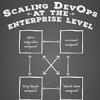 |
The Value of Making Your Data Sources Reusable across Test Automation Tools Many automation tools have a mechanism for storing data used in their test scripts. Typically, the specifics of this mechanism is different across tools, making it difficult to use this data outside the tool itself. Using an external, reusable data source allows organizations to avoid the cost of migrating or duplicating existing data, thereby future-proofing their frameworks.
|
|
 |
Containers: A Tester's Friend or Foe? Containers support the timely delivery of a quality software application. However, the change to a DevOps process involving containers will require testers to adapt to this new, more agile environment. What does that mean for testers and the work they do? Here's how testers can embrace these changes, containers, and DevOps.
|
|
 |
Considering User Experience when Testing Push Notifications in Messaging Apps The functionality of a messenger app's push notifications is expected to be the same regardless of the device or OS being used. This article discusses how testing these notifications involves keeping in mind the different states of the device and the app, and why the functional configuration audit is just as important as the physical.
|
|
 |
4 Ways to Boost Your Test Process with Service Virtualization One of the major challenges in software development is ensuring that all the software components needed to do integration and end-to-end testing are available in the test environment. Implementing service virtualization can remove environment setup as a blocking condition—and enable project teams to release better software, faster.
|
|
 |
Scaling DevOps at the Enterprise Level DevOps for the enterprise is the set of activities that support development and testing being managed within a framework for delivering the software into a stable production environment. Kim Megahee believes that DevOps can be successfully deployed with the adoption of Akaizen.
|
|
 |
Adopting ALM Will Enhance the Value of Your Test Team Modern ALM emphasizes total team involvement and a comprehensive set of tools so that the development lifecycle runs smoothly. Joe Farah shows you how test case management is a vital component to a successful ALM strategy.
|
|
 |
Is Software Configuration Management Technology Regressing? There are ever-growing ways to organize your project assets with public domain configuration management tools. There's a mistaken belief that these free software configuration management (SCM) alternatives can be just as powerful as leading commercial tools.
|
|
 |
How Agile Impacts Configuration Management and Testing: An Interview with Steve Berczuk
Video
Steve Berczuk is a regular contributor to TechWell and StickyMinds and a principal engineer and ScrumMaster at Fitbit in Boston. In this interview, Steve discusses configuration management and agile, helpful tools, and how testing has evolved over the years with the rise of agile.
|
|
 |
Managing Component Dependencies Bob Aiello explains that software engineers and architects do an amazing job designing a system’s architecture that fully represents all of the parts of the system that are created during the development lifecycle. However, one of the biggest challenges is understanding how each part of the system depends upon the others.
|
|
 |
Managing Servers: With Agents and Without Andrew Phillips details the challenges and advantages of two specific approaches to automating server management: agentless and agent-based automation. Agent-based automation refers to when a small piece of software—called an agent, service, or daemon—is installed on each target server, whereas agentless management automation software interacts with the remote-control functionality built into each host-operating system to perform the administrative tasks.
|
|

